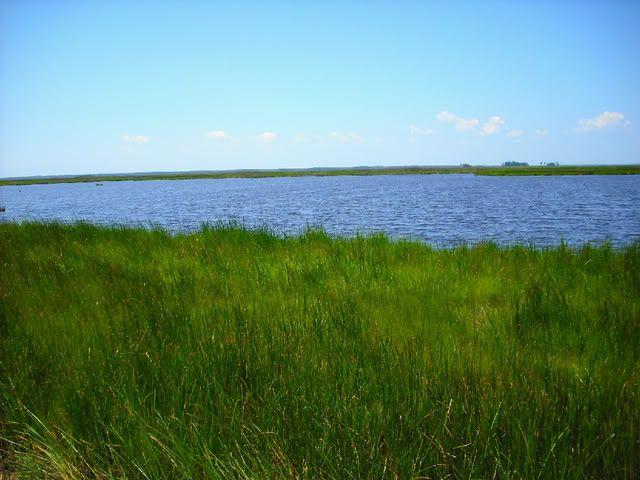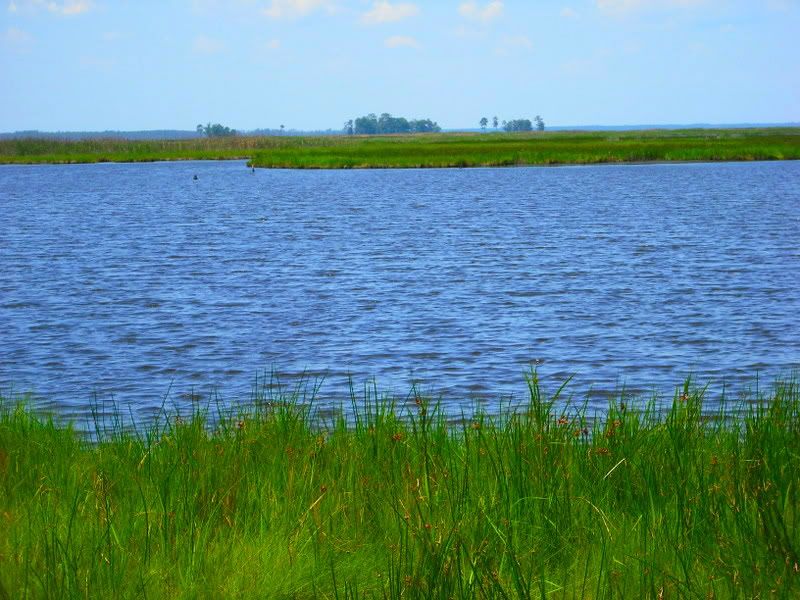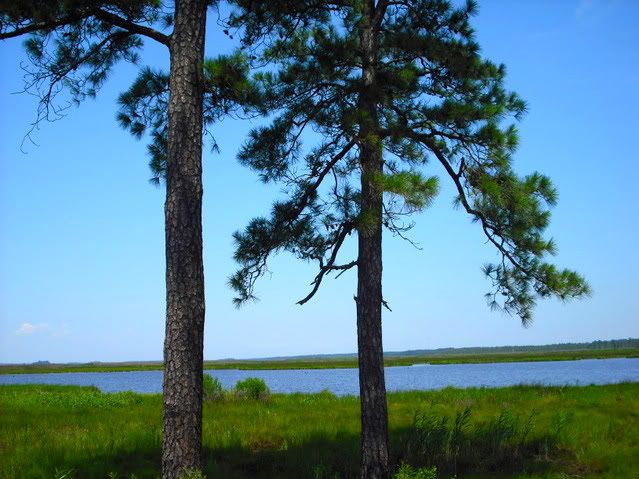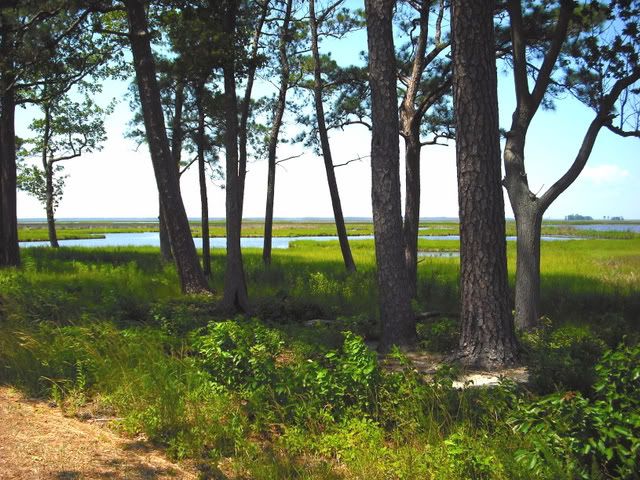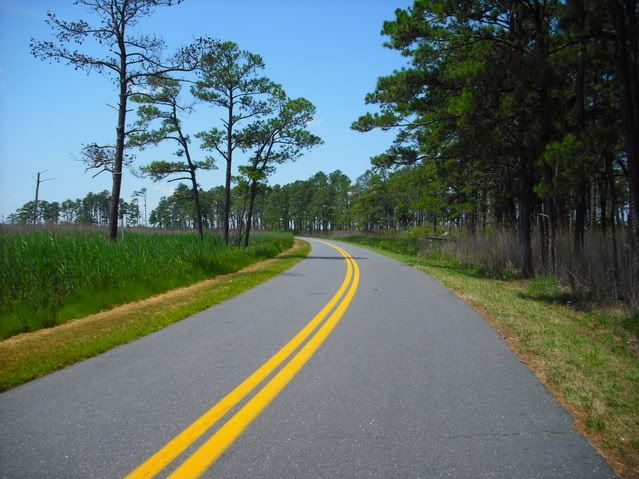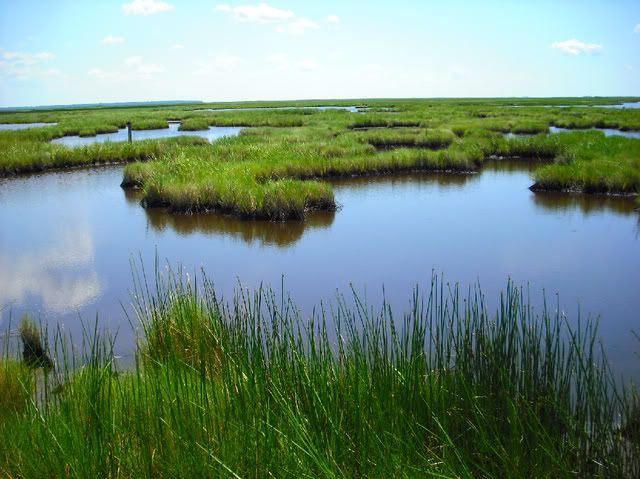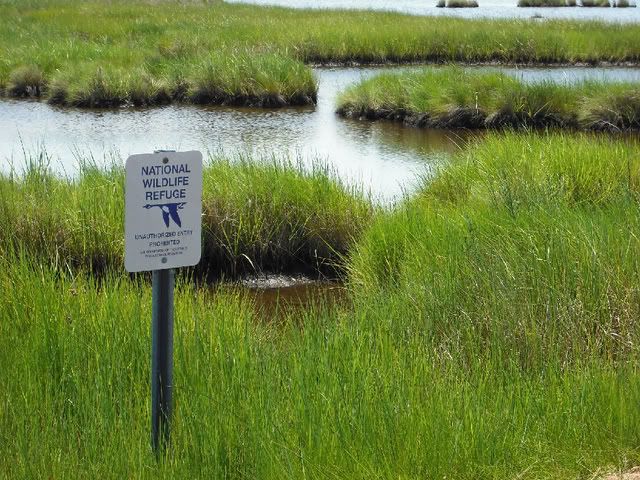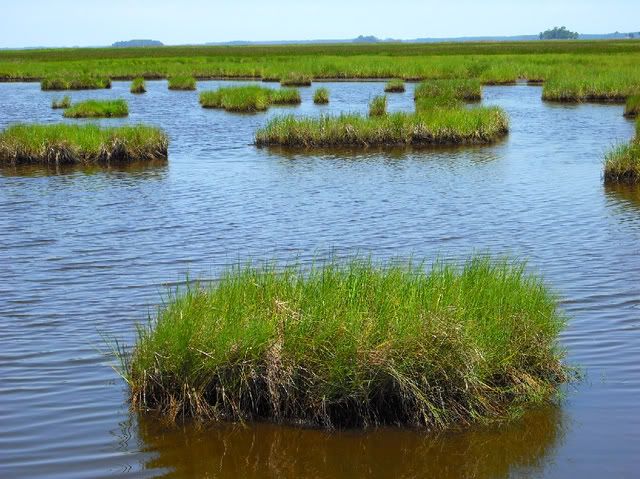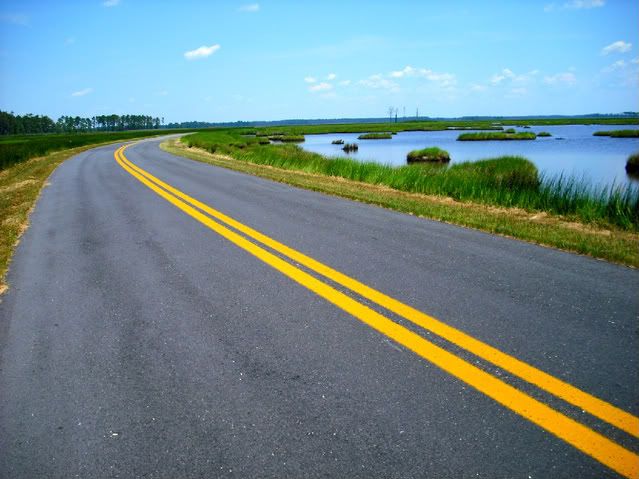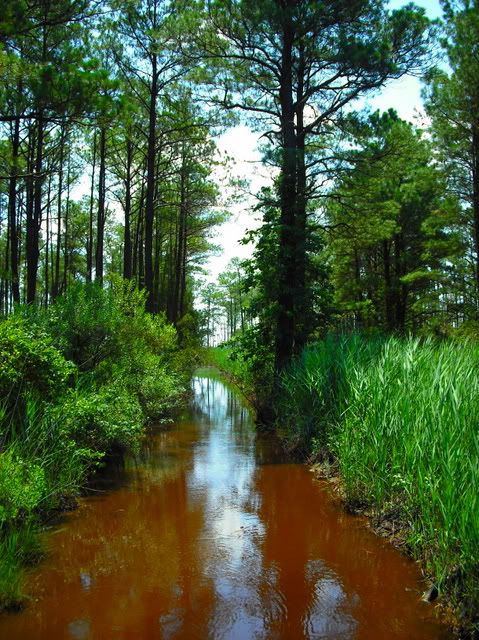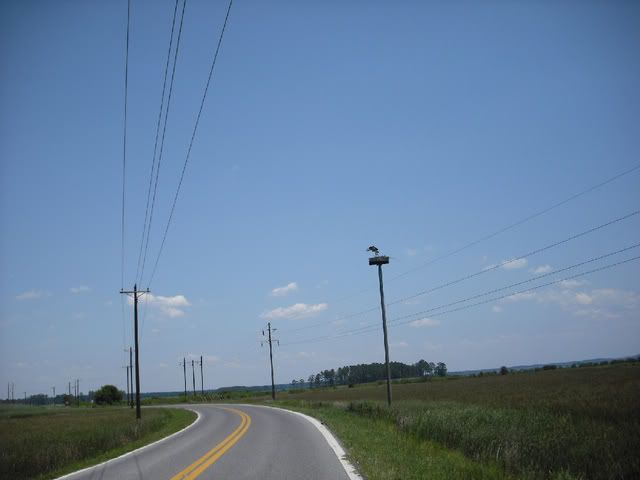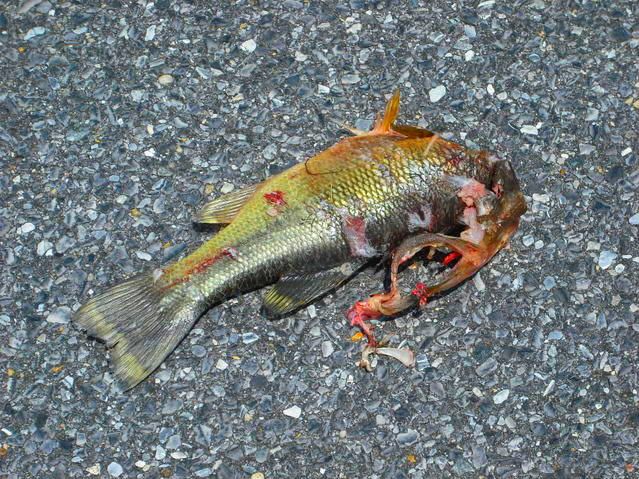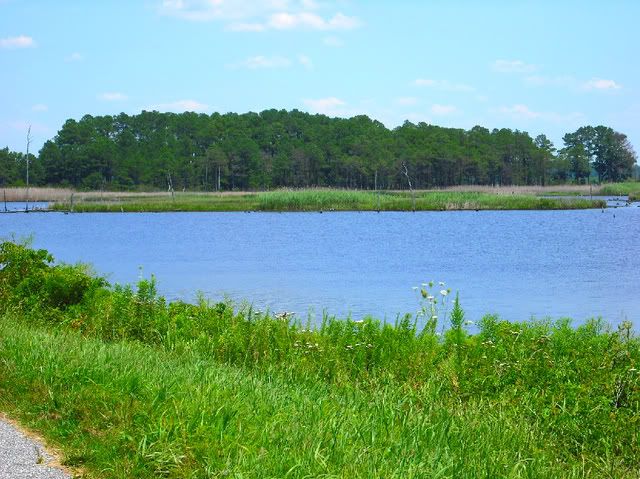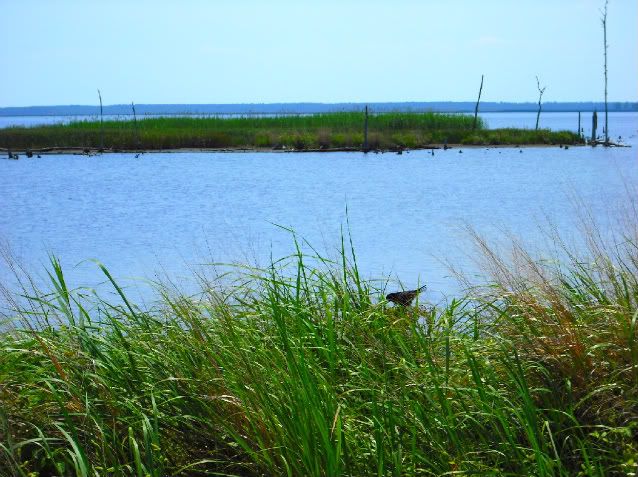I might make it back in the fall...looks like a must do...after I hit the mountains...
The info below was copied from this site
http://www.friendsofblackwater.org
Maryland's Blackwater National Wildlife Refuge was originally established in 1933 as a haven for ducks and geese migrating along the Atlantic Flyway. The Refuge is a popular place during the November migration when upwards of 35,000 geese and 15,000 ducks can be seen at the Refuge.
Another special feature of the Refuge is the resident bald eagle population. Blackwater hosts over 150 bald eagles during the winter and spotting one from the Wildlife Drive is the highlight of many a visit to the Refuge. In December, bald eagles begin nesting in tall loblolly pine trees. Eggs are laid around mid or late February, and the eagle pair will return to their large nests every breeding season until the nests are blown down or disturbed. At this time, Blackwater Refuge hosts one of the largest breeding populations of bald eagles in the country.
Although many visitors come to see the geese and eagles, Blackwater also contains over 250 species of birds, 35 species of reptiles and amphibians, 165 species of threatened and endangered plants, and numerous mammals that can be spotted throughout the year in Blackwater's marshes, forests, meadows, and fields. Some fortunate visitors even catch a glimpse of the endangered Delmarva fox squirrel or the recently delisted migrant peregrine falcon.
January
Geese, swans and ducks are present in the marsh along with hawks, great blue herons, and a few species of shorebirds. Mid-winter observations are best during thaws. Eagles, both bald and golden, are sometimes conspicuous along the Wildlife Drive. Great horned owls are incubating eggs while bald eagles are rebuilding their nests high in loblolly pine trees.
February
First northward bound migrants appear late in February - killdeer, robins, and bluebirds. Eagles lay eggs late in the month. Wintering waterfowl are preparing for the long flight north through intense foraging.
March
Most migratory waterfowl depart for points north. Masses of red-winged blackbirds pass through; some remain to nest. Osprey return from southern wintering grounds and begin constructing nests.
April
Resident ducks and geese are incubating eggs. The majority of migrant marsh birds return by mid-April. Blue-winged and green-winged teal passing through. (Blue-winged are latest in spring and earliest in fall). Delmarva fox squirrels are born. Young bald eaglets begin hatching (although some eagles have been known to nest early, and their eaglets hatch by the end of February). Osprey, wild turkey, and northern bobwhite all begin to nest. Late April and early May heralds peak shorebird migrations.
May
Migratory songbirds peak in late April and early May with warblers being most conspicuous and abundant. White-tail fawns (usually twins) begin to appear. Eaglets start to fledge; this will occur from the end of the month through the middle of June. The first broods of waterfowl appear.
June
Ospreys hatching in June. Eaglets fledge. Songbirds begin to nest.
July
Local goslings start to fly. Large quantities of insects being consumed by swallows, kingbirds, and flycatchers. The conspicuous marsh hibiscus (mallow) begins to bloom along marsh edges at end of month. Osprey young leave the nest.
August
Wading bird numbers increase. Blue-winged teal from the north arrive on southward migration. Some bald eagles disperse northward after the breeding season. Note: In the summers be prepared for large concentrations of flies and mosquitoes in the marshes and woods.
September
Ospreys migrate to South and Central America. Waterfowl numbers gradually increase. Egrets and herons accumulate until cold weather pushes them south. Tickseed sunflowers bloom; cattails go to seed. Songbird migration peaks in late September and early October. Toads are abundant.
October - December
Autumn colors peak. Blackbirds, the last of the songbird migrants, peak in October and November. Abundance of ducks and geese gradually increases. Peaks occur in late October or November. Tundra swans from Northwest Canada usually arrive in early November. Several hundred remain throughout the winter. White-tailed and sika deer breed from October to December. Bald eagle numbers increase with the arrival of migrants from the north. Golden eagles are occasionally seen during winter. Waterfowl numbers decrease. Some remain all winter, others move south or disperse throughout the Delmarva Peninsula. Prescribed burning of the marsh begins for regeneration of specific waterfowl food resources.
1999 AWD Astro purchased January 2007
2" Overland Vans Lift Kit, Add-a-Leaf, Shackles, Torsion Bars Cranked 1"
AGM Deep Cycle Marine Battery w/Isolator
Helwig Rear Anti-Sway Bar
Auburn Gear Pro Series Limited-Slip Differential
BFG AT KO 235/75/15
Cragar Nomad I Wheels
Dearly Departed 1990 RWD Shorty owned since day one.
Sold Feb 2007 with 193k miles.


